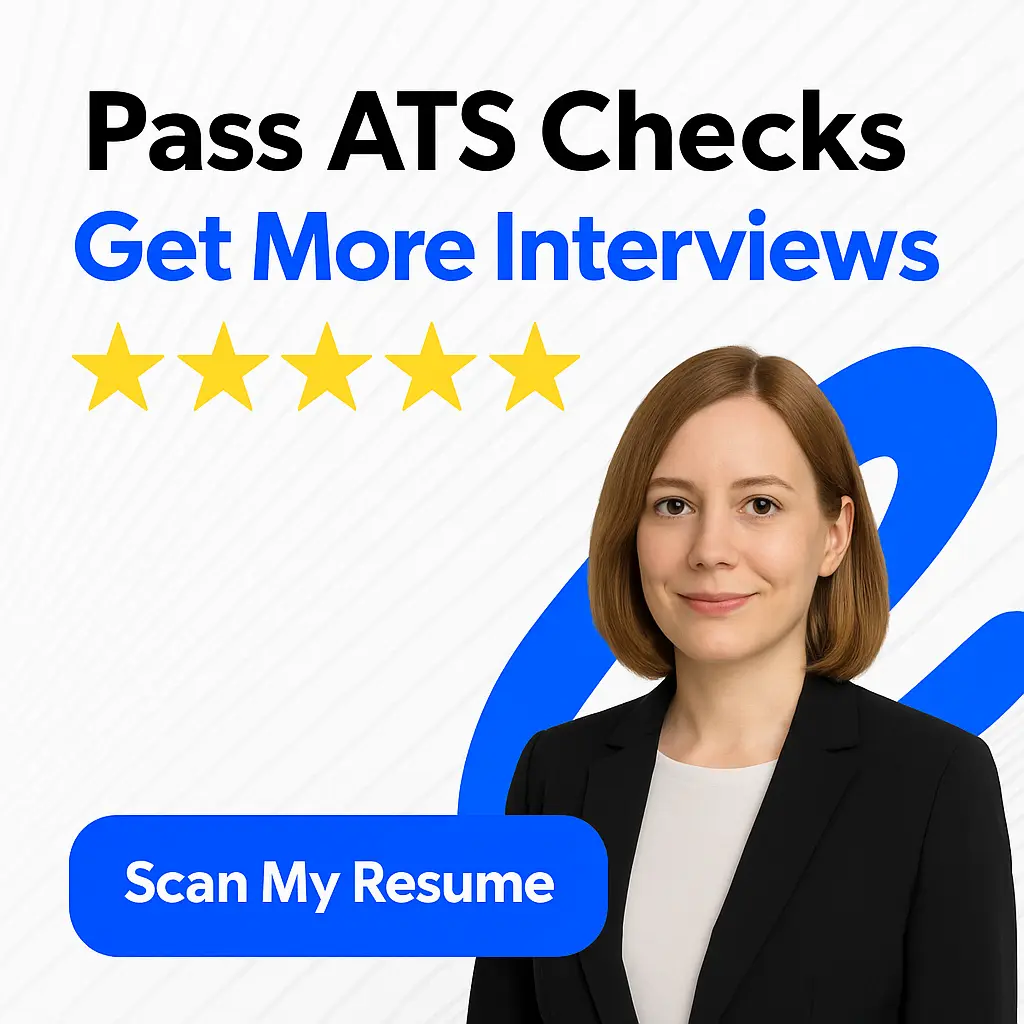In today’s job market, applying for jobs has become an increasingly competitive process. With the number of candidates applying for jobs rising each day, following up on your job application is more important than ever.
Following up on job applications is a crucial step in the job search process, as it can significantly increase your chances of landing the job you desire. This is because following up demonstrates your interest and enthusiasm for the job, which can make you stand out from other candidates who just apply and wait.
The benefits of following up are plenty. Firstly, it keeps you on the hiring manager’s radar and ensures that your application is not lost or forgotten. Secondly, it provides an opportunity to showcase your skills and qualifications, and explain further why you would be the ideal candidate for the job. Finally, it shows that you are proactive and tenacious, qualities that are highly sought after by hiring managers.
However, following up on job applications can be a delicate process, and there are some important Dos and Don’ts to keep in mind. In this article, we will provide a brief explanation of the Dos and Don’ts of following up on job applications, to help you navigate the process with confidence and grace. Whether you are a seasoned job seeker or just starting out, the following tips will be helpful in helping you master this important aspect of the job search process.
Dos of Following Up on a job Application
When it comes to following up on a job application, there are some important dos that you should keep in mind:


Send a thank-you email after submitting the application
Sending a thank-you email is a great way to show your appreciation for the opportunity to apply for the job. This simple gesture can go a long way in setting you apart from other applicants and showing your interest in the position.
Wait for the right time before following up
While it’s important to follow up on your job application, it’s equally important to wait for the right time to do so. If the job posting specified a deadline for applications, make sure to wait until after that date before following up. Additionally, if the employer specified a timeline for the hiring process, wait until that time has passed before reaching out.
Use a professional tone in your follow-up communication
When following up on your job application, it’s important to maintain a professional tone in all of your communication. Whether you’re sending an email or leaving a voicemail, make sure to use proper grammar and be courteous and respectful in your tone.
Customize your follow-up message
While it may be tempting to send a generic follow-up message to all of the positions you applied for, it’s important to customize your message for each employer. Take some time to research the company and the position, and tailor your message to reflect your interest and qualifications.
Keep your communication concise and to the point
Employers are busy people, and they don’t have time to read a lengthy email or listen to a long voicemail. Make sure to keep your follow-up communication concise and to the point, focusing on why you’re following up and any relevant updates or information.
By following these dos of following up on a job application, you can increase your chances of standing out as a professional and enthusiastic candidate for the position.
Don’ts of Following Up on a job Application
When it comes to following up on a job application, there are some things you should avoid doing at all costs. These are the “Don’ts” of following up:
-
Don’t follow up too soon after submitting your application. Give the recruiter or hiring manager enough time to review your application and consider your qualifications. Sending a follow-up email or message a day or two after submitting your application can be interpreted as pushy or impatient.
-
Don’t come across as desperate or entitled in your follow-up communication. It’s important to convey your enthusiasm and interest in the job, but avoid using language that sounds desperate or entitled. Remember, the employer is looking for someone who is confident and professional.
-
Don’t spam the recruiter or hiring manager with multiple messages. Sending multiple follow-up messages can be annoying and may even cause the employer to overlook your application altogether. Instead, wait a reasonable amount of time before sending a polite, concise follow-up.
-
Don’t demand feedback or raise expectations too high. While it’s understandable to want feedback on your application or to get excited about a job opportunity, avoid putting pressure on the employer by demanding feedback or raising your expectations too high. Keep your communication polite, professional, and respectful of the employer’s time.
By avoiding these “Don’ts” and focusing on the “Dos” of following up on a job application, you can increase your chances of getting noticed and ultimately landing the job you want.


Sample Email to Follow Up on Your Job Application
If you’ve recently submitted a job application and haven’t heard back from the employer, it can be tough to know what to do next. But sending a follow-up email can show that you are proactive, motivated, and interested in the position. Here’s a sample email template, along with some tips for customizing it for different job applications, that will help you write a professional and effective follow-up email.
Introduction to a Sample Email Template
Dear [Hiring Manager’s Name],
I’m writing to follow up on my job application for the [Job Title] position. I hope this email finds you well. I wanted to express my continued interest in the position and inquire about the status of my application.
Thank you for considering me for the role, and I look forward to hearing back from you soon.
Best regards, [Your Name]
Step-by-Step Guide to Writing a Professional and Effective Follow-Up Email
- Personalize your email by addressing the hiring manager by their name.
- Start your email off by expressing your continued interest in the position and thanking the employer for considering your application.
- Keep your email short, but make sure to include a clear and concise statement about the purpose of your email. In this case, it’s to inquire about the status of your application.
- Be courteous and professional in your language, and avoid sounding pushy or desperate.
- Keep a friendly tone throughout the email, and end by thanking the employer for their time and consideration.
Tips to Customize Your Email Template for Different Job Applications
While this template may work for some job applications, it’s always a good idea to customize your email for each specific job. Here are some tips for doing just that:
- Research the company and the job position to get a better sense of their needs and priorities. Use this information to tailor your email and identify what you can bring to the role.
- If you’ve been referred to the job by someone you know, mention that in your email to strengthen your connection with the employer.
- If you’ve applied to multiple positions within the same company, make sure to clarify which position you’re following up on to avoid confusion.
- Use the email as an opportunity to showcase your skills, experience, and qualifications. Provide any additional information that may be relevant to the position or the company.
By following these tips and using this sample email template as a guide, you’ll be able to write professional and effective follow-up emails that showcase your strengths and interest in the position. Remember to keep your tone polite and friendly, and always thank the employer for their time and consideration. Good luck with your job search!
How to Follow Up After a Phone Screening or Interview
After a phone screening or an interview, it is crucial to follow up with the hiring manager or interviewer. Proper follow-up helps you stand out among the other candidates and demonstrates your interest and enthusiasm towards the job. In this section, we will discuss different types of interview follow-up, strategies to tailor your follow-up approach based on the job and company culture, and the importance of personalization and empathy in follow-up messages.
Different Types of Interview Follow-up
There are several ways you can follow up after a phone screening or interview:
-
Thank you note/email: Sending a thank-you message within 24 hours of the interview is a standard practice that shows appreciation and gratitude towards the interviewer for their time and consideration.
-
Follow-up email: If you don’t hear back from the interviewer within the specified time frame, a follow-up email expressing your continued interest in the job is appropriate.
-
Phone call: Calling the hiring manager to follow up on your application can be a more personal way to express your interest and inquire about the status of the application process.
Strategies to Tailor Your Follow-up Approach
The follow-up approach you choose should depend on the job and company culture. For instance, some companies prefer a more formal approach, such as a thank-you note, rather than a casual phone call. Always do your research beforehand to understand the company culture and tailor your follow-up approach accordingly.
Another consideration is the timeline. If the interviewer stated a specific date by which they will make a decision, wait until after that date to follow up. Spacing out your follow-up messages, rather than bombarding the interviewer with emails and phone calls, shows professionalism and courtesy.
Importance of Personalization and Empathy in Follow-up Messages
When crafting your follow-up message, personalization and empathy are essential to make a lasting impression. Address the interviewer by name, refer to specific topics discussed during the interview, and reiterate your interest in the position.
Additionally, acknowledge the interviewer’s efforts and emphasize how their insights helped you better understand the role and the company. Remember, your follow-up message should not come across as a robotic template but should be a genuine expression of your gratitude and enthusiasm.
Following up after a phone screening or interview is a crucial step in the job application process. The type of follow-up message you choose, the timing, and the level of personalization and empathy can make all the difference between a memorable and forgettable candidate. Use these strategies to stand out from the crowd and secure the job you desire.
When to Give Up on Following Up and Move On
After sending your job application, it is important to follow up with the employer to express your interest in the position and to reaffirm your qualifications. However, it can be difficult to know when to stop following up and move on to other opportunities. Here are some signs that your follow-up communication may not be working:
-
Lack of Response: If you have followed up several times and have not received a response, it is a sign that the company is likely not interested in you at this time. It is best to move on and focus on other job opportunities.
-
Negative Response: If you receive a negative response from the employer, such as a rejection email or a message indicating that the position has been filled, it is time to move on and search for other job openings.
-
Lack of Interest: If the employer responds to your communication but shows a lack of interest in your candidacy, such as providing brief or generic responses, it is a sign that they are likely not interested in moving forward with you.
It is important to follow up after submitting a job application, but it is equally important to know when to stop and move on to other opportunities. Here are some strategies to help you let go of the job application and avoid burnout:
-
Set a timeline: Give yourself a timeline for following up on your application and stick to it. This will ensure that you are not constantly following up and will give you a concrete deadline for when to move on.
-
Seek feedback: Reach out to the employer and ask for feedback on your application or interview. This feedback can help you improve your skills and job search approach for future opportunities.
-
Focus on other opportunities: Instead of dwelling on one job opportunity, focus on other potential job openings that meet your qualifications and interests. This will help you expand your search and increase your chances of finding a job.
-
Take a break: Sometimes it’s best to take a break from the job search to avoid burnout. Take some time to rest and recharge before diving back into your search efforts.
Finally, here are some tips to keep your networking and job searching efforts strong:
-
Attend industry events and job fairs: Networking events and job fairs can provide valuable opportunities to connect with potential employers and learn about job openings in your field.
-
Utilize social media: Use professional social media platforms, such as LinkedIn, to connect with others in your field and network with potential employers.
-
Keep your skills updated: Take online courses or attend workshops to enhance your skills and make yourself a more attractive candidate to potential employers.
-
Be persistent: Keep a positive attitude and don’t give up on your job search. It may take time, but the right opportunity will come along if you are persistent and dedicated.
Following up on your job application is important, but it is equally important to know when to move on and focus on other opportunities.
How to Use LinkedIn to Follow Up on Your Job Application
LinkedIn is a powerful tool when it comes to finding job opportunities and connecting with potential employers. Beyond the initial job application, LinkedIn can also be used to follow up on your application and stay in touch with recruiters and hiring managers. Here are some strategies to help you leverage LinkedIn for effective follow-up communication and updates on your job application status.
Overview of LinkedIn’s Role in the Job Search Process
LinkedIn is essentially an online platform designed for professionals to connect with other professionals, network, and find job opportunities. This social media platform has over 700 million users worldwide, and it remains one of the most popular social networking sites among job seekers and recruiters. For job seekers, LinkedIn provides an opportunity to showcase their skills, accomplishments, and professional experience to a wider audience.
Strategies to Leverage LinkedIn for Follow-up Communication and Job Application Updates
When following up on your job application, it’s important to first check the company’s policy on follow-up communication. Some companies prefer phone calls, while others may prefer email or LinkedIn messaging. Once you understand the company’s preference, you can use LinkedIn to:
1. Connect with Recruiters and Hiring Managers:
After submitting your job application, you can use LinkedIn to find and connect with recruiters or hiring managers at the company. This can help you build a relationship with the hiring team, demonstrate your interest in the role, and learn more about the hiring process.
2. Share Relevant Content:
Sharing relevant content on LinkedIn shows that you’re engaged and knowledgeable about your industry. You can share articles, news updates, or industry reports that demonstrate your expertise and keep you top of mind with recruiters and hiring managers.
3. Thank You Note:
Send a thank you note or follow-up message to the recruiter or hiring manager who interviewed you. This will help you build goodwill and keep your name on their radar.
Tips to Optimize Your LinkedIn Profile for Recruiters and Hiring Managers
Your LinkedIn profile can be a powerful asset in your job search. Here are some tips to help you optimize your profile for recruiters and hiring managers:
1. Complete Your Profile:
Make sure to complete your profile with all pertinent information such as your work experience, skills, and education. This will show that you’re serious about your career, and it will make it easier for recruiters to find you.
2. Use Keywords:
Use keywords throughout your profile to help recruiters find you for relevant job opportunities. This can include skills, job titles, and industry-specific terminology.
3. Showcase Your Accomplishments:
Use your LinkedIn profile to showcase your accomplishments, including notable projects you’ve worked on, awards you’ve received, and other achievements that demonstrate your skills and expertise.
Following Up on a Job Application: Legal Considerations
When it comes to following up on a job application, there are certain legal frameworks you need to be familiar with in order to avoid any legal troubles. In this section, we’ll provide an overview of the legal considerations you should keep in mind when communicating with potential employers after applying for a job.
Overview of Legal Frameworks
The legal frameworks governing follow-up communication with potential employers can be summarized into two basic categories: non-discrimination and non-harassment.
Non-Discrimination
As a job applicant, it’s important to avoid any language or behavior that could be interpreted as discriminatory towards the employer or their members. This includes avoiding discriminatory comments or perceptions based on the candidate’s age, gender, race, religion, sexual orientation or any other protected class.
Non-Harassment
Harassment takes many forms, and can be a potential legal pitfall when following up on a job application. Avoid using any language that could be considered hostile, intimidating or offensive. This includes crude or derogatory language, persistent demands, or any threatening behavior.
Avoiding Discrimination and Harassment in Your Messaging
To avoid any legal trouble, it’s best to keep your follow-up communication professional and inoffensive. Avoid using any language that could be interpreted as discriminatory or harassing.
Here are some tips to help you navigate the legal boundaries of follow-up communication in your job search:
- Use neutral language and refrain from using any inappropriate comments or jokes
- Avoid any comments about age, gender, religion, race or any other protected class
- Keep your communication polite and professional
- Don’t send multiple emails or messages to the employer in quick succession; this could be interpreted as harassment
- Be mindful of the timing and frequency of your follow-up communication
Tips to Navigate the Legal Boundaries of the Job Search Process
Aside from avoiding discriminatory and harassing language, it’s also important to be aware of the legal boundaries of the job search process, such as privacy concerns, confidentiality and equal opportunity laws.
Here are some additional tips to help you navigate the legal landscape of the job search process:
- Respect the employer’s privacy and avoid contacting them on their personal phone number or email
- If an employer requests confidential information from you, be sure to verify their identity and legitimacy before providing it
- Be aware of equal employment opportunity laws and how they apply to you as a job applicant
- If you have any concerns about the legality of the follow-up communication, you may consider seeking legal advice before proceeding.
Following up on a job application can be a delicate process. By being mindful of the legal frameworks for job application follow-up communication, avoiding discrimination and harassment in your messaging, and navigating the job search process with care, you can maximize your chances of landing your dream job.
Mistakes to Avoid When Following Up on Your Job Application
When it comes to following up on your job application, there are certain mistakes that applicants often make that can harm their chances of landing the position. To prevent these missteps, consider the following tips:
Common Mistakes to Avoid
- Being Too Pushy: Following up once or twice is acceptable, but don’t bombard the hiring manager with constant emails or phone calls. This can come across as desperate and annoying.
- Not Being Professional: Even if you’ve established a friendly rapport with the hiring manager during the interview, keep communication professional when following up. Avoid using slang or emojis and proofread carefully.
- Asking About Salary/Benefits Too Early: If the hiring manager hasn’t addressed salary or benefits during the interview or job listing, don’t bring it up during your follow-up communication. Wait until a job offer is extended.
Tips to Avoid Missteps
- Be Patient: Hiring managers are busy and may need time to review applications and make decisions. Give them at least a week before following up.
- Be Polite: Start with a polite greeting and thank the hiring manager for considering your application.
- Be Brief: Keep your follow-up message short and sweet. Reiterate your interest in the position and ask if there are any updates.
Lessons to Learn from Other Candidates’ Mistakes
While it’s important to be aware of the common mistakes to avoid, it’s also helpful to learn from other candidates’ missteps. Here are a few examples:
- The Overeager Candidate: One candidate followed up three times in one week and even showed up at the company’s office without an appointment. This behavior ultimately resulted in the candidate not being considered for the position.
- The Unprofessional Candidate: Another candidate used casual language and abbreviations in their follow-up email. This lack of professionalism made the hiring manager question the candidate’s attention to detail.
- The Salary-Focused Candidate: A candidate inquired about salary and benefits during their follow-up email, despite the fact that it had not been mentioned in the job posting or interview. This made the candidate appear more interested in money than the position itself.
By being aware of the mistakes that other candidates have made and following the tips provided, you can increase your chances of presenting yourself in the best possible light and ultimately landing your dream job.
Examples of Successful Follow-Up Stories and Tactics
In this section, we will provide you with real-life examples of effective job application follow-up, including case studies of candidates who secured interviews and job offers through strategic tactics. These stories demonstrate the power of following up on your job application and showcase the dos and don’ts of effective follow-up.
Introduction to Real-Life Examples of Effective Job Application Follow-Up
Following up on your job application is a critical component of the job search process. It demonstrates your interest and enthusiasm for the position and allows you to stand out from other candidates. However, many job seekers are intimidated by the follow-up process and may not know how to follow up effectively.
To help you master the art of follow-up, we have assembled a collection of success stories from job seekers who used strategic tactics to secure interviews and job offers. These candidates used a variety of methods to follow up on their job applications, including phone calls, emails, and thank-you notes.
Case Studies of Candidates Who Secured Interviews and Job Offers Through Strategic Tactics
Our case studies highlight the success stories of job seekers who followed up on their job applications and secured interviews and job offers. These stories provide insights into the dos and don’ts of effective follow-up.
Case Study #1: Maria
After applying for a marketing position, Maria followed up with a personalized email to the hiring manager. She highlighted her relevant experience and expressed her excitement about the opportunity. The hiring manager was impressed with Maria’s initiative and brought her in for an interview. Maria later found out that she was the only candidate who followed up on her application and ultimately got the job.
Case Study #2: John
John applied for a software engineering role and followed up with a well-crafted thank-you note after his first interview. In the note, he thanked the hiring manager for the opportunity to interview and included a few key points that demonstrated his expertise and enthusiasm for the position. The hiring manager was impressed with John’s follow-up and invited him back for a second interview. John ultimately got the job.
Case Study #3: Sarah
After applying for a job in the healthcare industry, Sarah followed up with the hiring manager via phone call. She used the call as an opportunity to ask a few questions about the position and demonstrate her interest in the company. The hiring manager was impressed with Sarah’s initiative and professionalism and invited her in for an interview. Sarah ultimately got the job.
These case studies demonstrate that following up on your job application can be a powerful tool in your job search arsenal. However, it’s essential to approach follow-up strategically and effectively. By crafting personalized emails, sending thank-you notes, and using phone calls to demonstrate your interest and enthusiasm, you can set yourself apart from other candidates and ultimately secure the job you want.
Related Articles
- Tailoring Your Resume to a Job Description: Tips and Tricks
- 30 Leadership Examples for Job Interviews: A Pro’s Guide
- Market Research Analyst: Job Description & Skills in 2023
- Resume Content: What to Include (and What to Leave Out)
- Associate Marketing Manager Job Requirements for 2023







